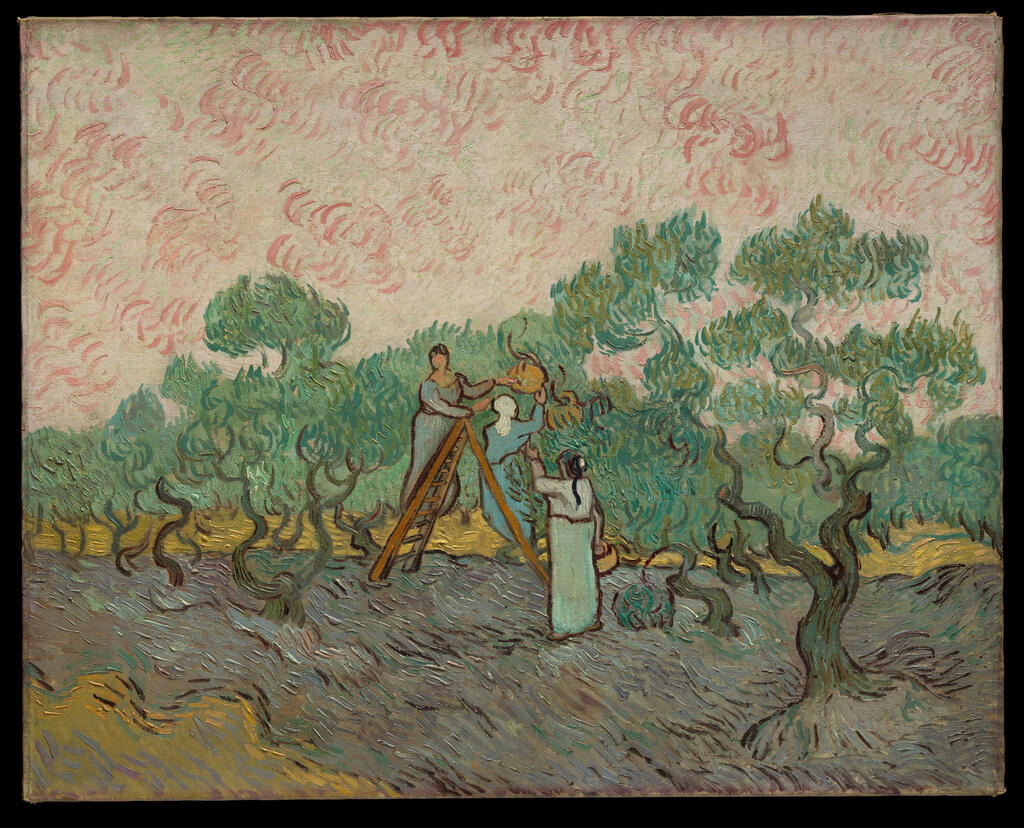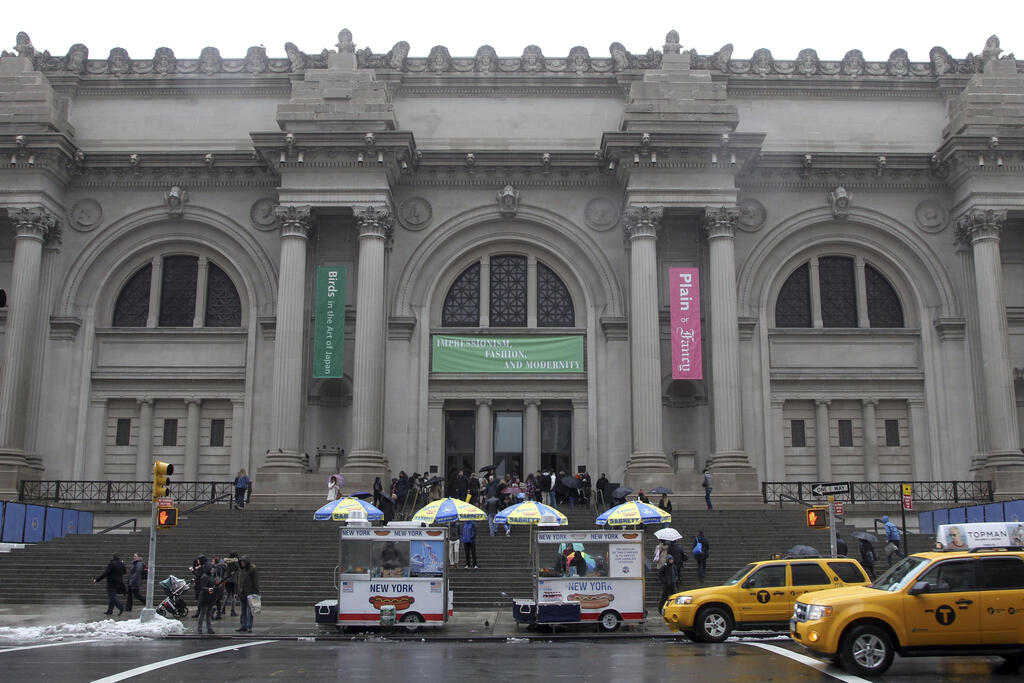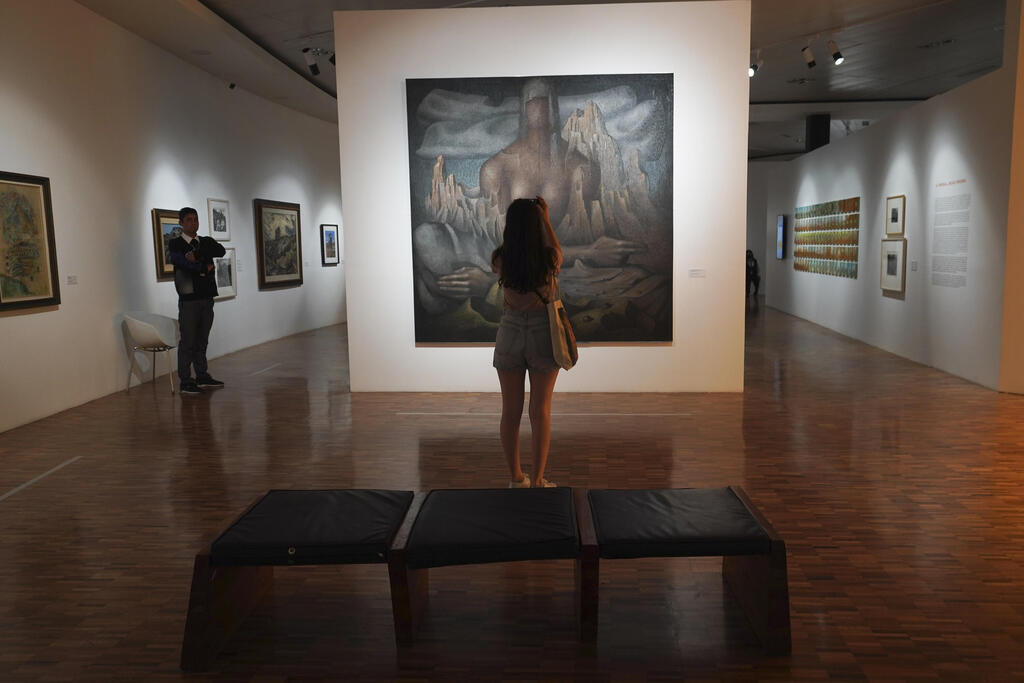Since New York passed legislation last year for the restitution of Nazi-looted art displayed in museums, each ensuing lawsuit unfolds like an episode of CSI, featuring intense family dramas, global diplomatic wrangles, intricate property law issues and a cast that includes private investigators, historians, art dealers and iconic names like Picasso, Van Gogh, Guggenheim and MOMA, all centered around a singular, often non-impressionistic, painting.
More stories:
Two developments this week add another layer to this already intricate canvas. In one case, the Israeli descendants of a Jewish Holocaust survivor, including Dorit Marx from Arad and Ilan Marx from Halutza, are suing the Metropolitan Museum in New York. They allege the theft of a Van Gogh painting previously owned by their family titled "Women Picking Olives" (La cueillette des olives), valued at an estimated $70 million, tracing the case's history over a century.
In a transcontinental lawsuit filed in a Northern California court, where the family fled from the Nazis in Munich, the nine heirs allege that the chief curator of the museum, considered one of the most important in the world, purchased the artwork at a reduced price and sold it without the knowledge of its original owners - even though it was on the prohibited list of artworks looted from Jews by the Nazis.
The painting "Women Picking Olives," painted by Van Gogh in 1889 shortly before his death, was purchased from a prestigious gallery in Munich in 1935 by Hedwig Stern, a well-known high-society woman in the city, for her collection of Impressionist works. It is one of the 15 paintings from the famous post-Impressionist painter’s olive tree collection created while he stayed in a mental hospital in Saint-Rémy, after cutting off his own ear.
Van Gogh admired the beauty of the olive trees and found peace and tranquility in them. In a letter to his brother from that year, he wrote, "It is something so special and extraordinary! Too beautiful to dare to paint or capture it. The olive tree is something else, it is, if you want to compare it, like Delacroix."
When Stern, her husband and their six children tried to escape the wave of Nazi persecution in 1936, the Gestapo prevented them from taking the artwork. Pressed for time and in need of funds to flee, Stern agreed to sell the painting back to the gallery, which took advantage of the situation to purchase it for pennies on the dollar. Gallery owner Heinrich Thannhauser, incidentally, was also Jewish, and his name frequently appears in lawsuits of this kind.
5 View gallery
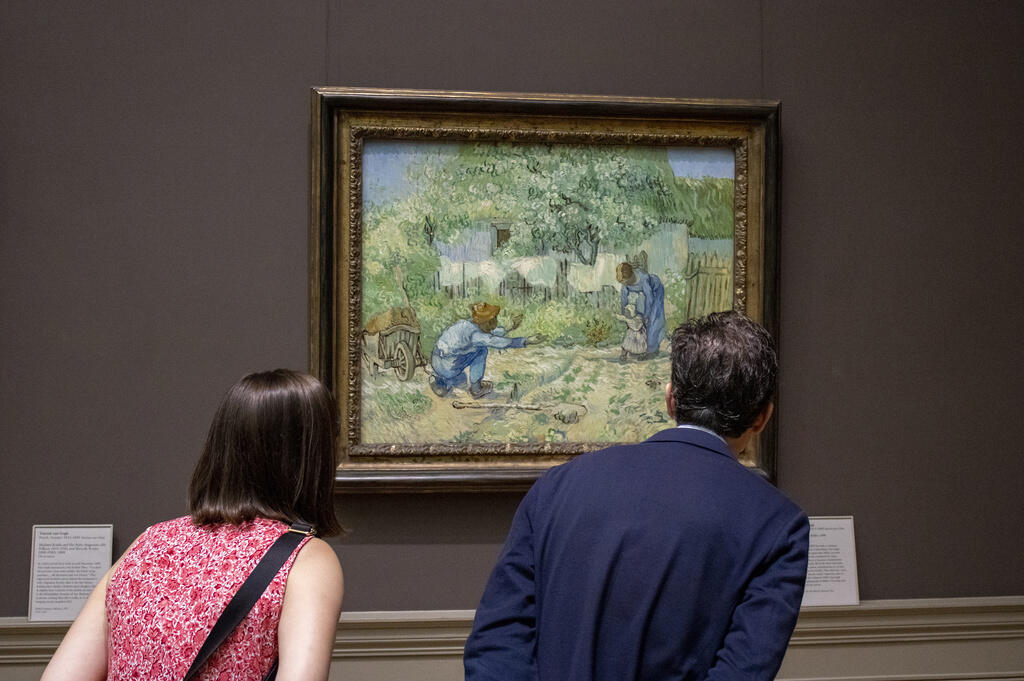

First steps, after Millet - another work of Van Gogh on display at the Metropolitan Museum of Art in New York City
(Photo: Ted Shaffrey/AP)
Stern and her family eventually found safe haven in Berkeley, California. About a decade later, Thannhauser’s son arrived in New York with much of the art in his possession. He sold "Women Picking Olives" to a local tycoon from the Astor family, who eventually sold it in 1955 to the Metropolitan Museum. The chief curator at the time, Theodore Rousseau, approved the purchase for $125,000, even though, according to the lawsuit, he was well aware of its history.
The plaintiffs claim the artwork appeared on a list of looted art since Stern tried to locate it after the war and specifically traveled to Munich and Washington to meet with American officials. They also add that the gallery owner who brokered the deal between the Astor family and the Metropolitan Museum was on the State Department's red flag list as a dealer in looted Jewish treasures.
According to the heirs, further proof of the museum's alleged questionable conduct came in 1972 when curator Rousseau sought to sell the artwork. He organized a secretive public sale to several well-known galleries and managed to sell the painting for $75,000.
The sale itself was kept secret for months until the American Art Dealers Association approached the New York Times to complain about a "breach of public trust". In the article, which is attached to the lawsuit, the public sale was termed an "extraordinary action", as the Met "had never before parted with a Van Gogh of such quality".
The buyer was identified as Gianni Agnelli, an "Italian industrialist" and an associate of one of the city's powerful galleries. The museum's director at the time explained to the newspaper that it was merely a "lesser work" and the proceeds from it were used for the "purchase of bigger things by masters that we simply do not have and will never be available again", such as a painting by Diego Velázquez valued at $5.5 million.
Curator Rousseau passed away about a year later, and the museum instructed that his document archive be sealed until 2073 - which, according to the plaintiffs, intentionally allows the museum to conceal the truth about the "Women Picking Olives" affair for the coming decades.
Since its sale in 1972, the painting has been absent from public view, but in 2019, it suddenly appeared in the catalog of a new gallery that opened in Athens, Greece. When Stern's descendants - as she had since passed away - learned of this, they decided to sue both the museum and the Greek gallery, claiming that their family had fallen victim to a decades-long web of deceit. They are demanding the artwork be returned or its estimated value, in addition to compensation.
The Metropolitan Museum stated that at the time of the painting's sale, there was no documentation indicating it belonged to the Stern family, and that this information only became available several decades after it left the museum's collection.
In an official response, it was conveyed that the sale "met the museum's strict criteria," and the artwork was indeed "considered of lesser quality compared to other works of the same type in the collection. While the Met stands by its position that this work was acquired and sold legally within all guidelines and policies, the museum welcomes and will consider any new information and documentation that comes to light."
The new lawsuit comes a day after a festive press conference in which the New York district attorney announced the restitution of seven art pieces by the Austrian artist Egon Schiele, with a total value of $7 million, to the heirs of a Holocaust victim. This concludes the world’s longest legal battle concerning the restitution of art looted by the Nazis.
The saga began back in 1998 when the then-Manhattan district attorney tried to prevent the return of one of the artworks from the MOMA in New York to Austria. Legal experts estimate that the current move by the district attorney will significantly influence future court rulings in similar cases.
One of the heirs, Timothy Reif, 64, a judge at the U.S. Court of International Trade, told Ynet that he dedicated his life to this moment which "reminds us again that the largest mass murder in history long concealed the largest mass theft in history." The seven artworks that were returned were on display in three museums, including, as mentioned, at the MOMA in New York, and some of them were in the possession of collectors like World Jewish Congress President Ronald Lauder, who is considered a supporter of the restitution of art looted during the Holocaust.
5 View gallery
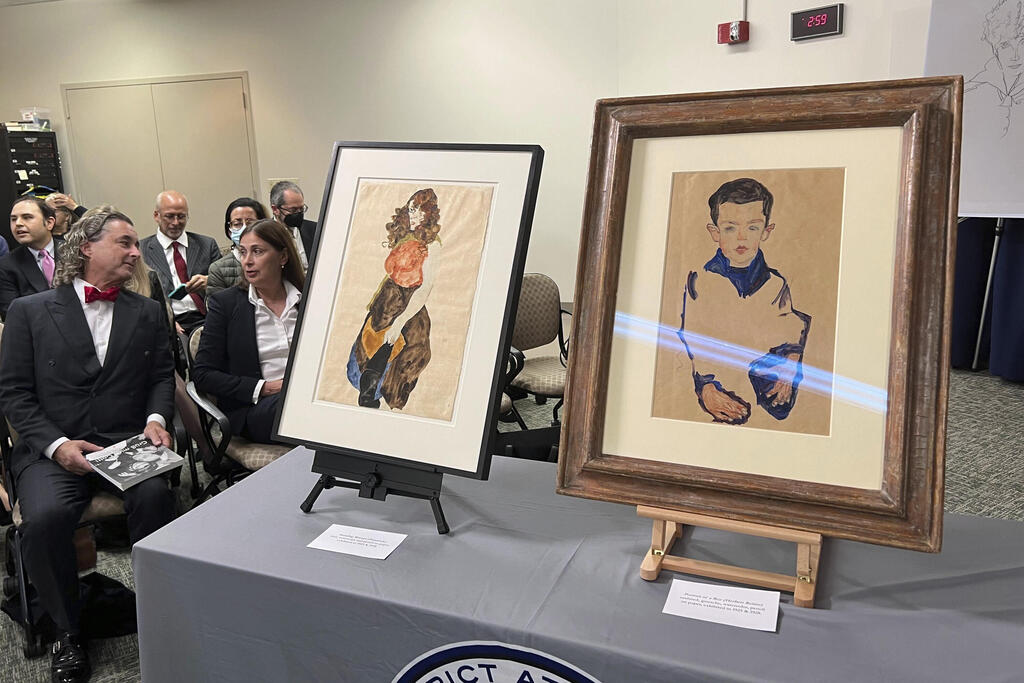

Works by Egon Schiele which were returned to the heirs of Fritz Grünbaum
(Photo: AP/Bobby Caina Calvan)
Among the works by Schiele that were restituted is "I Love Antithesis," a self-portrait he completed while in prison in 1912, valued at $2.75 million; as well as "Russian War Prisoner" (1916) valued at $1.25 million, and "Girl with Black Hair" (1911), valued at $1.5 million.
They were owned by the Austrian-Jewish cabaret artist and writer Fritz Grünbaum, whose art collection included more than 100 pieces that were looted during the Holocaust. Grünbaum was sent to the Dachau concentration camp, where he was murdered in 1941. His wife and children were murdered a year later in death camps in Poland.
Egon Schiele was an Austrian expressionist painter highly regarded among Jewish art collectors who fell victim to looting during the Nazi era. The Jewish community faced significant persecution in Germany beginning in 1933, in Austria after the Anschluss in 1938, and in France during the German occupation in 1940. Consequently, there are numerous compensation claims today surrounding Schiele's artworks.



